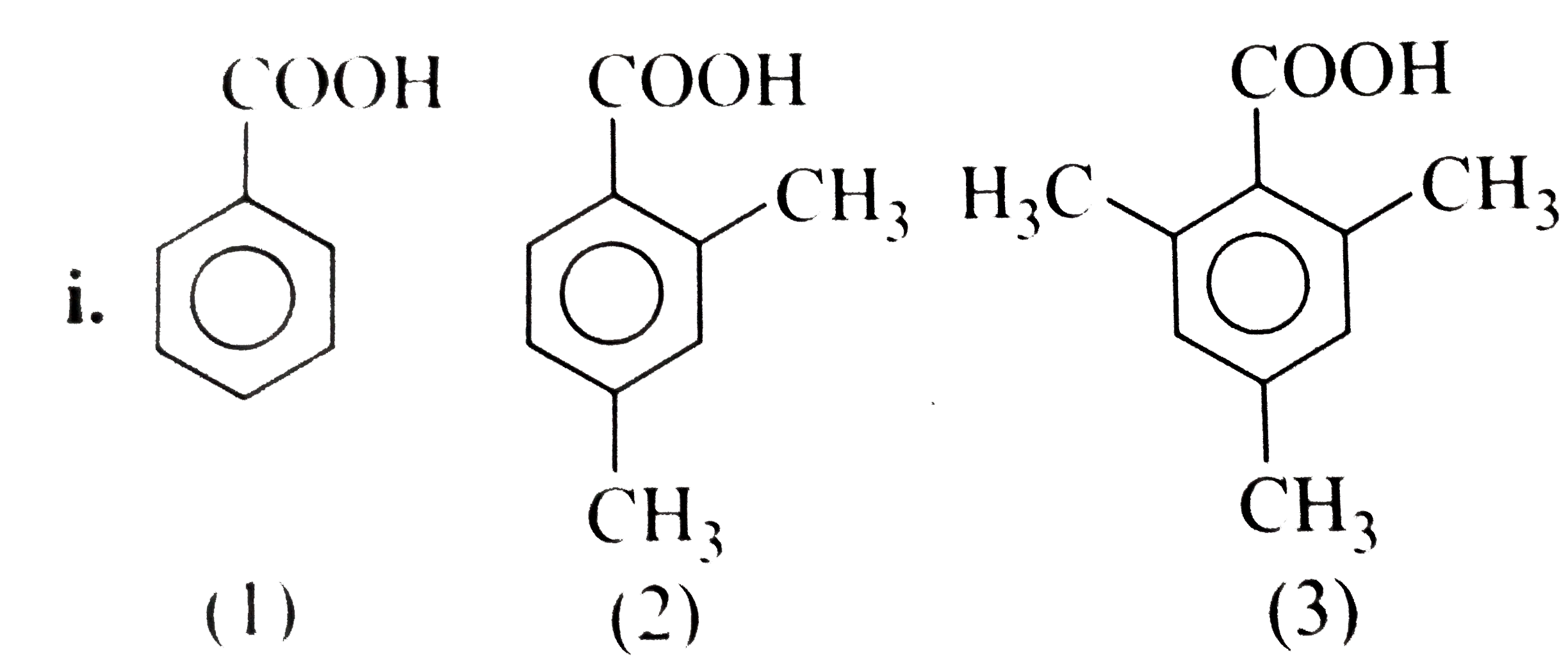This reaction is known as
aldol condensation
Cross aldol condensation
The Claisen-Schmidt reaction
none of these
The correct Answer is:C
Topper's Solved these Questions
- GENERAL ORGANIC CHEMISTRYBOOK - FIITJEECHAPTER - GENERAL ORGANIC CHEMISTRYEXERCISE - Section (II) [Jee mains]: With Single Correct Choice
78 Videos
- GENERAL ORGANIC CHEMISTRYBOOK - FIITJEECHAPTER - GENERAL ORGANIC CHEMISTRYEXERCISE - MORE THAN ONE CORRECT CHOICES
24 Videos
- GENERAL ORGANIC CHEMISTRYBOOK - FIITJEECHAPTER - GENERAL ORGANIC CHEMISTRYEXERCISE - SINGLE INTEGER ANSWER TYPE QUESTIONS
14 Videos
- GASEOUS STATEBOOK - FIITJEECHAPTER - GASEOUS STATEEXERCISE - MATCHING LIST TYPE QUESTION
1 Videos
- HYDROCARBONSBOOK - FIITJEECHAPTER - HYDROCARBONSEXERCISE - SINGLE INTEGER ANSWER TYPE QUESTION
9 Videos
Similar Questions
Identify A from the following:
(i) C6H5COCH3A−−→C6H5COOH+CO2+H2O
(ii) C6H5COCH3A−−→C6H5−H∣C∣OH−C6H5
(iii) C6H5COCH3A−−→C6H5CH2CH3+H2O
View Solutiona. Acid halides, anhydrides, esters and amides, all of them contain (C=O) group but none of them gives test for (C=O) group, i.e., they do not form oximes, hydrazones, and DNP derivatives, etc. Why?
b. Arrange the following in the decreasing order of nucleophilic addition.
i. (1)−CHO
(2)−COCH3
(3)−COOH
(4)−COCI
(5)−CONH2
(6)−COOCH3
(7)−COOΘ
ii. (1)CH3CHO
(2)CH3COCH3
(3)HCHO
(4)CH2H5CH2COCH3
iii. (1)CH3COCH3
(2)C6H5COCH3
(3)C6H5COC6H5
(4)C6H5CH2COCH3
iv. (1)C6H5CHO
(2)ρ−CH3.C6H4.CHO
(3)ρ−OH.C6H4.CHO
(4)ρ−NO2.C6H4.CHO
(5)ρ−CI.C6H4.CHO
v. (1)HCHO
(2)CH3CHO
(3)CH3COCH3
(4)CI3CCHO
c. Arrange the following in the increasing order of ease of hydrolysis.
(1)CCH3COOC2H5
(2)CH3COCI
(3)(CH3CO)2O
(4)CH3CONH2
d. Arrange the following in the increasing order of ease of acid-catalysed esterification of:
i.
ii. (1)CH3CH2COOH
(2)(CH3)2CHCOOH
(3)(CH3)3CCOOH
iii. (1)CH3CH2CH2OH
(2)CH3CHOHC2H5
(3)(CH3)2C(OH)C2H5
e. Arrange the following esters in decresing order of ease of alkaline hydrolysis.
i. (1)HCOOCH3
(2)CH3COOCH3
(3)(CH3)3CCOOCH3
(4)(CH3)2CHCOOCH3
ii. (1)CH3COOCH3
(2)CH3COOC(CH3)3
(3)CH3COOCH(CH3)2
(4)CH3COOCH2CH3
iii. (1)C6H5COOCH3
(2)ρ−CH3O−C6H4−CCOOCH3
(3)ρ−NO2−C6H4−COOCH3
(4)ρ−Cl−C6H4−COOCH3
View Solution
Knowledge Check
CH2=CH2+H2pt,T1K−−−→C2H6
CH2=CH2+H2Ni,T2K−−−−→C2H6
the correct relation among the following isAT1>T2BT2>T1CT=T2DT1>2T2Following compounds are given
(i) CH3CH2OH
(ii) CH3COCH3
CH3−CHOH∣CH3
C6H5CH2CH2C6H5
Which of the above compound (s) on being warmed with iodine solution and NaOH will give iodofrom ?A(i),(iii)and(iv)BOnly(ii)C(i),(ii) and(iii)D(i)and(iii)
(a) You are provided with the following four reagents LiAlH4,I2/NaOH,NaHSO3 and Schiff's reagent. Which two reagents can be sued to distinguish between the compound in each of the following pairs:
(i) CH3CHO and CH3COCH3
(ii) CH3CHO and C6CH5CHO
(iii) C6H5COCH3 and C6H5COC6H5
(b) Write a note on Cannizzaro reaction
View SolutionIdentify the reagents shown in bold in the following equations as nucleophiles or electrophiles:
(a) CH3COOH+HO−→CH3COO−+H2O
(b) CH3COCH3+−CN→(CH3)2C(CN)(OH)
(c ) C6H6+CH3+CO→C6H5COCH3
View SolutionIdentify the reagents shown in bold in the following equations as nucleophiles or electrophiles:
(a) CH3COOH+HO−→CH3COO−+H2O
(b) CH3COCH3+−CN→(CH3)2C(CN)(OH)
(c ) C6H6+CH3+CO→C6H5COCH3
View SolutionAmongest the following maximum number of compounds which give iodoform test are
CH3CONH2,CH3COCl,CHCOOH,(CH3CO)2
C6H5COCH3,C6H5CH2CHO,
C6H5(OH)CH3
C6H5CH2CH2OH,(CH3)2C=CHCOCH3
CH3COCH2COOC2H5
View SolutionHow can we distinguish chemically the following pairs of compounds?
(i) CH3CHO and CH3COCH3
(ii) CH3CHO and C6H5CHO
(iii) C6H5COCH3 and C6CH5COC6H5
(iv) CH3CHO and CH3CH2CHO
View SolutionHow can we distinguish chemically the following pairs of compounds?
(i) CH3CHO and CH3COCH3
(ii) CH3CHO and C6H5CHO
(iii) C6H5COCH3 and C6CH5COC6H5
(iv) CH3CHO and CH3CH2CHO
View Solution
